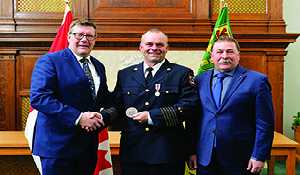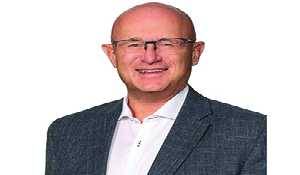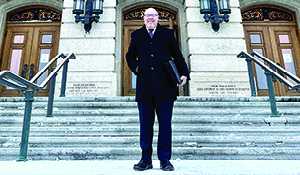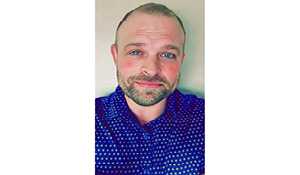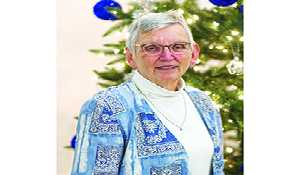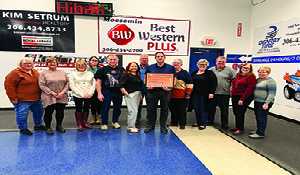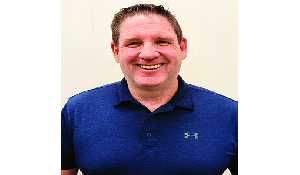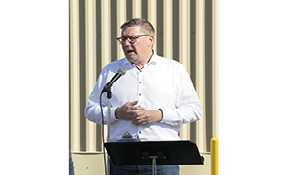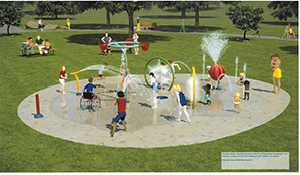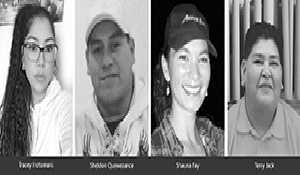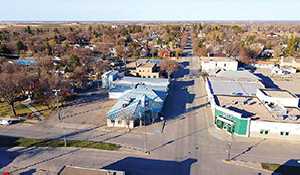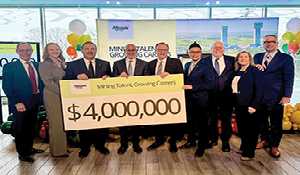One family’s experience with Alzheimer’s Disease
Living with Alzheimer’s Disease a heart-wrenching journey
May 2, 2024, 4:05 pm
Ashley Bochek
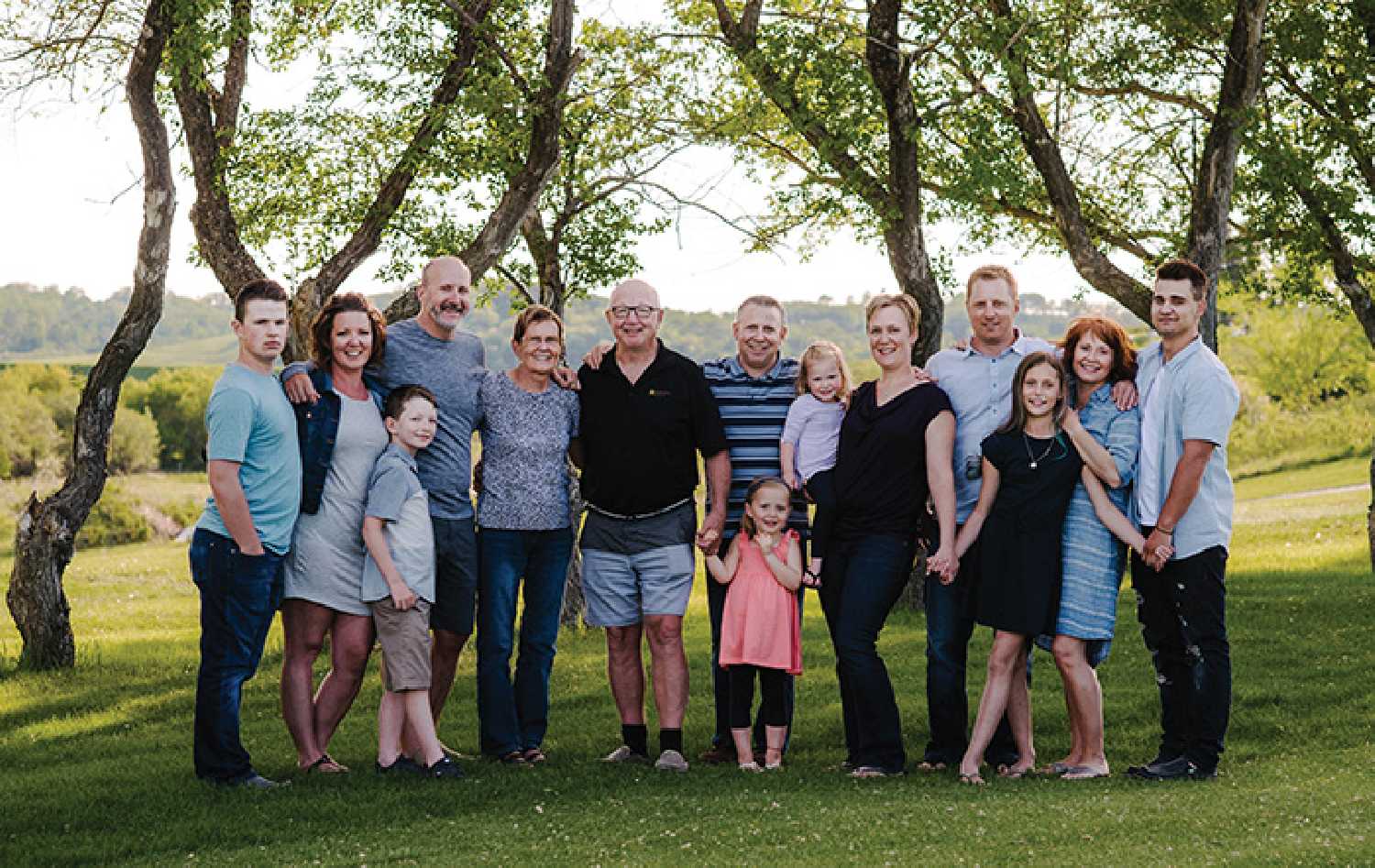

Bill Thorn says he has learned a lot as he, his wife Phyllis, and their family have lived with Phyllis’s Alzheimer’s diagnosis over the last decade, but the most important lesson he has learned is the true value of friendship.
“What I have really learned from the experience is the value of friendship. So many people—Phyllis’s friends—they ask me every day of how she is doing, and people come to me and my kids and they really care about us and what we are going through.
“I have learned how valuable it is to have good friends. It’s so important to have friends and I even think in some ways it is a reflection of this community as to everybody looks out for each other and we seem to bond together when we need to.
“It sure helps to get through the days. Knowing that they are there or somebody there that will give you a hug or squeeze your hand. Knowing that you have somebody that just cares in your life.”
He has also learned the importance of support from people going through the same thing. There is a local support group in Moosomin for families dealing with Alzheimer’s and other forms of Dementia.
“People don’t understand what it’s like unless you live with it, and this group helps you by bringing together people who all understand.
“It is different than talking to your friends about it because these people have lived through it, and we all have similar experiences. With Alzheimer’s, every case is different, but there are similarities between the individual cases. It helps prepare people on what to expect down the road to hear from people who have been through it. In my case, it was making the decision to put my wife Phyllis into a care home that was difficult. It was a very tough decision and that group helped us as a family to do that.”
“It can be pretty depressing if you don’t have somebody to lean on. That depression leads to so many other elements if you just let that get away on you. Depression can lead to a lot of other illnesses. If it helps keep somebody relatively healthy by trying to find something positive every day. That is what we try to do, because a lot of people are living in unfriendly ways of life. I think the ones that come on a regular basis appreciate that we are available. They know what you are going through.
“A lot of your friends feel sorry for you and they care, but people that have lived through it seem to understand it a little better as compared to somebody who hasn’t. It has been good for us. That key group of about half a dozen or so have really enjoyed what we have got out of it.”
Facing Alzheimer’s for a decade
He said Phyllis was first diagnosed with Alzheimer’s a decade ago.
“My wife was showing signs probably 10 years ago of memory and struggling with basic duties like cooking, driving a car, she would get lost uptown. One of the first things I noticed was how she couldn’t keep track of her golf score. She didn’t have the right score. She was having trouble remembering how many shots she took and I could see her struggling with that at least 10 years ago.”
He said it is difficult to see the cognitive decline in a loved one.
“You see them daily and from one month to the next you think how much they have declined from what they could do a month ago and they can’t do it today. Sometimes it levels off and goes pretty good for maybe six months and then all of a sudden it’ll just spiral.
“I remember very early talking to Dr. Van about it and I remember him telling me some people decline steadily and others in steps, but about 10 years from now they will all end up about the same level of cognitive abilities. Some people go a lot quicker than others, but at the end they all seem to be at the same level.
“In our case, we are very lucky. Phyllis has never been violent and never gets upset, but some of them get very vocal. The pod they have there at Cobblestone House is for people with Dementia issues. They try to keep them all in the same group.”
Cobblestone a godsend
Thorn said having the care available at Cobblestone House for people with Dementia makes it easier on families.
“Having Cobblestone in our town is a godsend for us, it makes it way easier to be part of Phyllis’s life without having to be two hours away. The staff is just so caring. They really care about her and she cares about them. She has bonded well with them. Sometimes I will be sitting there and the girls will be over somewhere and she will say ‘well I am going to go now’ and she will leave me to go sit with the girls because she has made friends with them. “
Despite living with Alzheimer’s, Phyllis still remembers her family.
“She knows me and has never forgotten who I am. Actually one day, I was there at the home and Phyllis was out in the hall with a new girl who was there so I said, ‘Oh, hi I am Bill’ and she said back ‘Oh you’re Bill. She talks about you all the time’ So this new girl already knew who I was.
“She remembers the boys and she refers the whole female staff as Angela. She’ll say things like ‘Angela did my hair today or Angela did my nails’ and I know Angela wasn’t there, but I think whenever the girls give her a hand she relates them to Angela.”
The hardest part
Thorn says that, for him, the hardest part for him is leaving Cobblestone House after a visit with his wife.
“The hardest part for me every day is when I go to visit her and I leave and walk out of the building, I just feel frustrated, I feel angry, I feel guilty.
“I feel all those emotions, but I get to my vehicle and I am so happy we’ve got that facility here. Every day I feel those emotions, but you can’t do anything about it. We are getting through it.”
He said it’s important to try to stay positive.
“I am really working on seeing the sunshine every day. That is important and that is what we try and talk about in our group, is to try and be positive. You want to think of good things, wake up to good things, because there are so many good things.
“Phyllis’s family is all here and she has friends here and some of them will go up and visit her.
“The weather is still something she will talk about, a sunny day, windy day, or snowy day. She gets joy out of a sunny day. One of the girls there teases her a little bit too and she always laughs.
“They’re really good to her at Cobblestone. It is a little different than the care at the hospital because there is only about seen in each pod and a little more staff available. They help set the table, clear the dishes off, sweep the floor. The idea is to keep it like your home as if that’s your family. For us, the timing of opening Cobblestone was perfect. Within a month after they opened it was time for her to go there. It’s been great and that facility is going to be more and more important as time goes on. Each generation is going to need more and more care. Each generation is going to keep growing and people are living longer so we need more care. Less healthcare workers and helpers will be our biggest problem in the future. That whole baby boomer group we came up with medicare and financed it off the ground and now we need it. We’re really feeling the pressure because we are not prepared to handle all the needs.
More facilities needed
Thorn said he believes more facilities like Cobblestone House are needed.
“I know we have families that don’t have their loved ones in a home close to them so we need more facilities like this,” he said.
“They would send them to Regina where they don’t know anybody so I think people are going to stay in the community longer and their golden years will be more appreciated with their family in their community.”
Research has not led to any breakthroughs in Alzheimer’s treatment yet.
“There really hasn’t been any success in anything yet, but I know they are making little gains. About three years ago my sister in-law had a relative in England who had found an Alzheimer’s drug there so I took it to Dr. Kerkhoff and he agreed to try it. I thought it worked real well for Phyllis for about six to eight months and I thought it stabilized her quite a bit, but it was temporary and he said that is what it would do.”
“We also went to Montreal, Phyllis and I because there was supposedly a silver bullet at a clinic there. There was a program there on exercise and diet. There was this Keto diet of just protein, fiber, and no carbs, which really seem to have some merit to it except you need a certain amount of other stuff in your system and we both went on it and lost weight, but also lost muscle mass. Phyllis never regained her muscle, but I worked out and regained most of it back. We went on that for a bit and I thought it stabilized her for a bit. It was too restrictive we found.”
He said there are a range of ages of people impacted by Alzheimer’s Disease.
“There are some pretty young ones. Some people get diagnosed in their fifties. Gordon Grant was diagnosed at 58.”
Learning experience
Thorn said he has learned a lot from his experience with a loved one facing down Alzheimer’s
“I think I have learned to appreciate what there is out there. I keep reminding myself it could be a lot worse. You meet people who have lost loved ones. Having a loss, they call it an ambiguous loss because you grieve, but it is not an end. You lose a very important part of your life, but it doesn’t completely go away. That is a hard thing to deal with. I always think it could be a lot worse. You see people suffer from some terrible cancers those diseases there is no positives in those ones and there is no positive in this one either.
“One thing you learn is you got a lot of friends, and it makes you a stronger person. You learn to look at things a little differently. You realize that people complain about things that aren’t really that important.
“You learn to take life a little less seriously, be glad you are healthy, find ways to be happy, and stay involved in all the other things in life.
“I liked to be involved. Learning to sit at home by yourself, that takes a little bit of work too, having nobody else in the house. Phyllis and I we started going together when we were teenagers. We were fourteen and fifteen years old. She worked at the dealership with me for 25 out of the 28 years I was there. We’ve been a long time together. Fifty-four years we were married, but we were together for six or seven years before that.”
He visits Phyllis at Cobblestone House every day.
Excited about local Walk for Alzheimer’s
Thorn said he is excited for the Moosomin Walk for Alzheimer’s.
“I am pretty enthused about it,” he said. “I was just going to jump in a car to go to Regina which is the same day. But to have one right here in Moosomin I think will be very good. There are walks in Prince Albert, Lloydminster, Regina, Saskatoon, and Swift Current.”
“I think we will see how it goes, but I would like to see it go for a few years. Lots of other places have done this walk for several years. It is the first time in Moosomin though. I think it will be a good event.
“It’s nice to be involved in an event like this where you can make a difference.”
